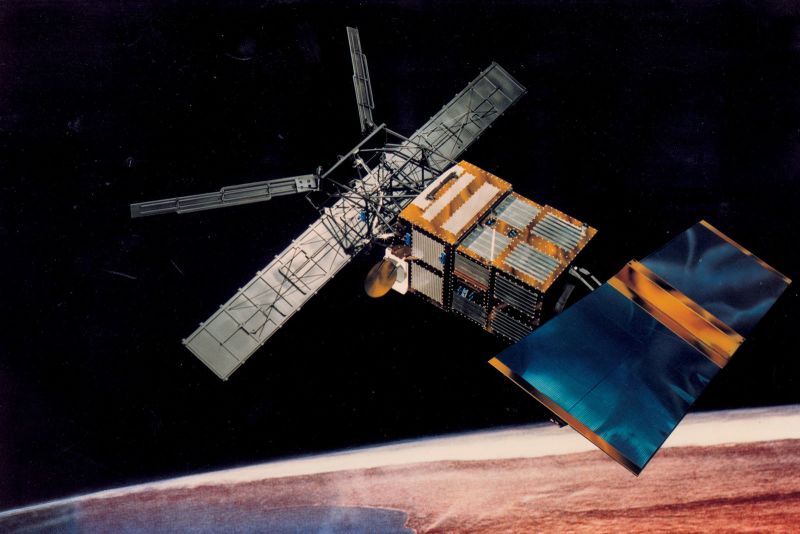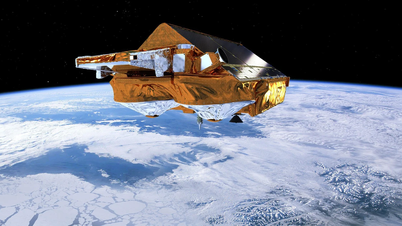ESA's Space Debris Office, along with its international monitoring network, is closely monitoring the trajectory of the Earth observation satellite ERS-2. The satellite is expected to fall to Earth at 6:14 a.m. ET on Wednesday (6:14 p.m. ET), with a margin of error of 15 hours. ESA is also providing live updates on its website.
Because the satellite's re-entry into the atmosphere was natural, no maneuvers were performed, making it impossible to determine exactly where and when the device re-entered the atmosphere and began to burn up, according to an ESA statement.

Illustration of the ERS-2 satellite. Photo: ESA
The exact timing of the satellite’s return remains unclear due to unpredictable solar activity, which can change the density of Earth’s atmosphere and how it affects the satellite. Last July, for example, increased solar activity accelerated the return of ESA’s Aeolus satellite.
According to the ESA, the ERS-2 satellite has an estimated mass of 2,294 kg after it runs out of fuel. At an altitude of about 80 km above the Earth's surface, the satellite is expected to break up and most of the debris will burn up in the atmosphere. The agency said some debris may reach the Earth's surface but it will not contain any toxic substances and will most likely fall into the ocean.
The Earth observation satellite ERS-2 was first launched on April 21, 1995. It was the most complex satellite of its kind developed and launched by Europe at that time.
Together with its twin ERS-1, it collected valuable data on Earth's polar caps, oceans and land surfaces, and observed disasters such as floods and earthquakes in remote areas. According to ESA, data collected by ERS-2 is still in use today.
In 2011, ESA decided to decommission the satellite and let it leave orbit. The satellite performed 66 de-orbit maneuvers in July and August 2011 before its mission officially ended on September 11 of that year. The maneuvers reduced the satellite's altitude and burned off its remaining fuel, placing ERS-2 in an orbit that slowly spiraled closer to Earth and re-entered the atmosphere over the next 15 years.
According to the ESA, the chance of a person being injured by space debris each year is less than 1 in 100 billion, about 1.5 million times lower than the risk of dying from an accident at home.
Hoai Phuong (according to CNN)
Source


![[Photo] The 1st Congress of Phu Tho Provincial Party Committee, term 2025-2030](https://vphoto.vietnam.vn/thumb/1200x675/vietnam/resource/IMAGE/2025/9/30/1507da06216649bba8a1ce6251816820)

![[Photo] Panorama of the cable-stayed bridge, the final bottleneck of the Ben Luc-Long Thanh expressway](https://vphoto.vietnam.vn/thumb/1200x675/vietnam/resource/IMAGE/2025/9/30/391fdf21025541d6b2f092e49a17243f)
![[Photo] President Luong Cuong receives President of the Cuban National Assembly Esteban Lazo Hernandez](https://vphoto.vietnam.vn/thumb/1200x675/vietnam/resource/IMAGE/2025/9/30/4d38932911c24f6ea1936252bd5427fa)
































![[Photo] Solemn opening of the 12th Military Party Congress for the 2025-2030 term](https://vphoto.vietnam.vn/thumb/1200x675/vietnam/resource/IMAGE/2025/9/30/2cd383b3130d41a1a4b5ace0d5eb989d)































































Comment (0)